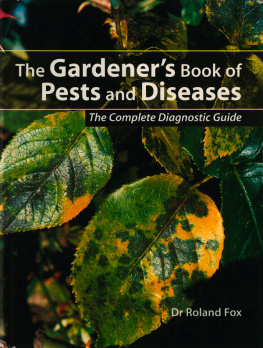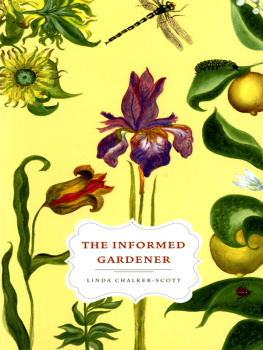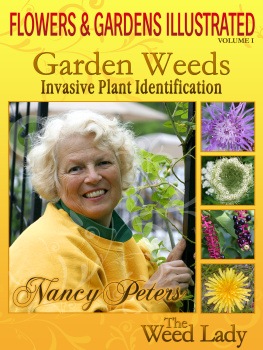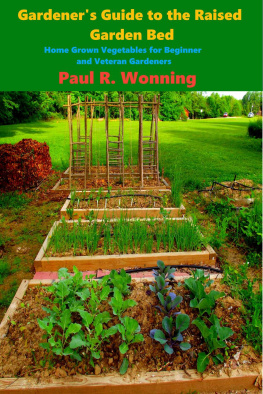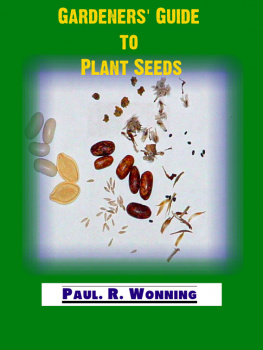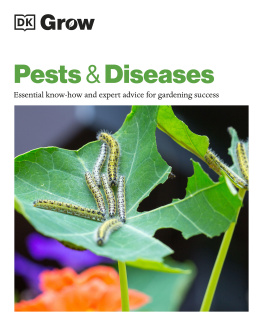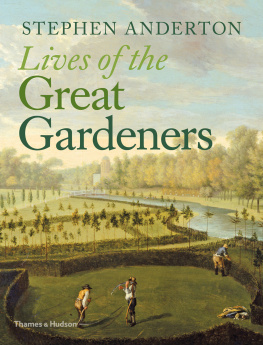Gardeners who want to understand what is going on or going wrong in their gardens will find THE GARDENERS BOOK OF PESTS AND DISEASES invaluable. It will also be a vital reference tool for all professionals, garden centres, nursery stock plant growers, landscape and amenity managers, and naturalists.
An introduction covers the principles of healthy gardens and how to recognise plant disease and interpret symptoms. Fox discusses various methods of control, both preventative and remedial. He then discusses how to differentiate between pests and diseases. The core of the book is an encyclopedic section which looks at individual problems under the headings roots, bulbs, corms and tubers, leaves and buds, shoots and stems,flowers and fruits. The final section shows how to maintain a garden free of diseases by the use of integrated control.
Dr Roland Fox is a lecturer in crop protection, Department of Horticulture, Reading University.
Jacket illustrations (front): black spot on rose leaves; (back, left to right): white blister on cabbage; leopard moth caterpillar exposed in apple twig; powdery mildew infection on Sweet William foliage; peach leaf curl; grey field slug on hosta leaf.
THE GARDENERS BOOK OF PESTS AND DISEASES

Grey mould spotting on rose.
ROLAND FOX
THE GARDENERS BOOK OF PESTS AND DISEASES

To Alicia,
who concentrates her efforts on growing her plants, despite all the pests and diseases in our garden, and a love of cats.
Dr Roland Fox 1997
The moral rights of the author have been asserted.
All rights reserved. No part of this publication may be reproduced, stored in a retrieval system, or transmitted in any form or by any means, electronic, mechanical, photocopying, recording or otherwise, without the prior written permission of the copyright owner.
eISBN 9781849942225
Published in the United Kingdom as eBook in 2015 by
Batsford
1 Gower Street
London WC1E 6HD
An imprint of Pavilion Books Company Ltd
Designed by DW Design Ltd, London
Photographs courtesy of Holt Studios International and East Malling Research Station (pg 63)

Bud Blast on bud.
Introduction
Ensuring a healthy start by creating a healthy garden
Gardens can be designed to exclude disease and pests from the onset. If this task is shirked the penalty is severe. Perpetual watchfulness will then be needed to counter the plagues of hungry pests and a variety of epidemics of withering disease.
Gardens are highly complex artificial environments that have been designed by humans. While all plants eventually fade, wither and decay in time, every keen gardener attempts to delay the process of decay as long as possible. In gardening, as in other spheres, success often relies on a combination of luck and good judgement to ward off the ravages of time and nature. Apparent miracles are possible. We all know of gardens that appear in good health and others where nothing grows well except the bill for new plants which never thrive. Just like an athlete, it pays to start good practices right from the beginning. Apart from disease organisms and pests that blow in from time to time, the health of a garden is determined when the soil is prepared for the first seeds that are sown, and the first trees or shrubs that are planted. The consequences last until remedial action has to be taken; in the meantime poor crops will be harvested and the garden will not flourish.
Sensible planning is essential in order to grow plants to their maximum potential, which will remain beautiful and healthy. Most pests and diseases reduce quality, some may occasionally cause the complete destruction of certain plants if detected too late. In these circumstances it is essential to detect outbreaks at the earliest stage and start preparing control measures immediately infection by disease or infestation by pests has been seen in neighbouring gardens or if damage is anticipated.
The extent of the injury that is likely to result to a plant from infestation by an unidentified pest or disease cannot be reliably forecast until it has been accurately diagnosed.
Although keys can be used, most gardeners may prefer to study the illustrations of the pests and diseases of major garden plants. Examples of the most damaging pests and diseases of key garden plants are illustrated in the encyclopaedic section of this book.
If a particularly destructive or unusual pest or disease is suspected, the causal agent must be quickly and accurately identified, so that appropriate action can be taken. Some diseased plants may even have to be eradicated under a Plant Health Order; many of these are indicated in the illustrations. More often an appropriate control measure has to be selected quickly if damage is to be minimised.

Close up of unidentified target like fungal leaf spot on begonia leaf.
Recognising plant diseases
The principles of plant pathology
Anticipating disease
Nearly all outbreaks of disease result from one or more of four major sources of infection, regardless of whether the pathogen is a fungus, virus or bacterium: (1) seed, (2) other planting material (seedlings, bulbs, corms, cuttings grafts etc), (3) airborne disease pathogens, (4) soil-borne disease pathogens. Seed that is available commercially must be tested to ascertain that it is free of pathogen contamination. Although heavily infected seeds can reveal direct evidence of pathogens such as bits of fungi or gummy masses of bacteria, most seeds rarely show any clear symptom of disease. In the average garden, the extent of many soil-borne diseases only becomes apparent over a number of seasons as they are rather slow-growing. Often this historic perspective is lacking and a range of diagnostic techniques (covered in Fox, 1993) is necessary to detect their presence in the soil before planting.
Once the amount of soil-borne disease is known, airborne pathogens form the main threat. If the arrival of showers of spores onto plants is correctly anticipated, protectant sprays and other control measures can be synchronised with them for best control. Several fungi as well as bacteria hitch a ride on a wide range of insects that feed on plants or their nectar. Some other fungal as well as bacterial pathogens, and many viruses arrive within airborne insects and mite vectors that can be controlled by insecticides or acaricide sprays.
Detecting early stages of disease before it can cause too much damage
Ever since the middle of the 19th century, scientists have paid considerable attention to discovering the entire details of the life cycle of the organisms that cause disease. As a consequence, it has been possible for plant pathologists to predict severe levels of diseases from past outbreaks. Latent infection is now recognised to be common among many diseases which become apparent after harvest, such as soft rot (Erwinia carotovora) and gangrene (poma exigua var. foveata) on potatoes, neck rot of onion (Botrytis allii) and grey mould of strawberries (Botrytis cinerea). As a result of this knowledge, recommendations for treatment for many of these diseases have been improved by enabling the application to be carefully targeted at a particular growth stage of the plant but only if a gardener is observant and well trained enough to recognise the presence of the pathogen.
Next page
